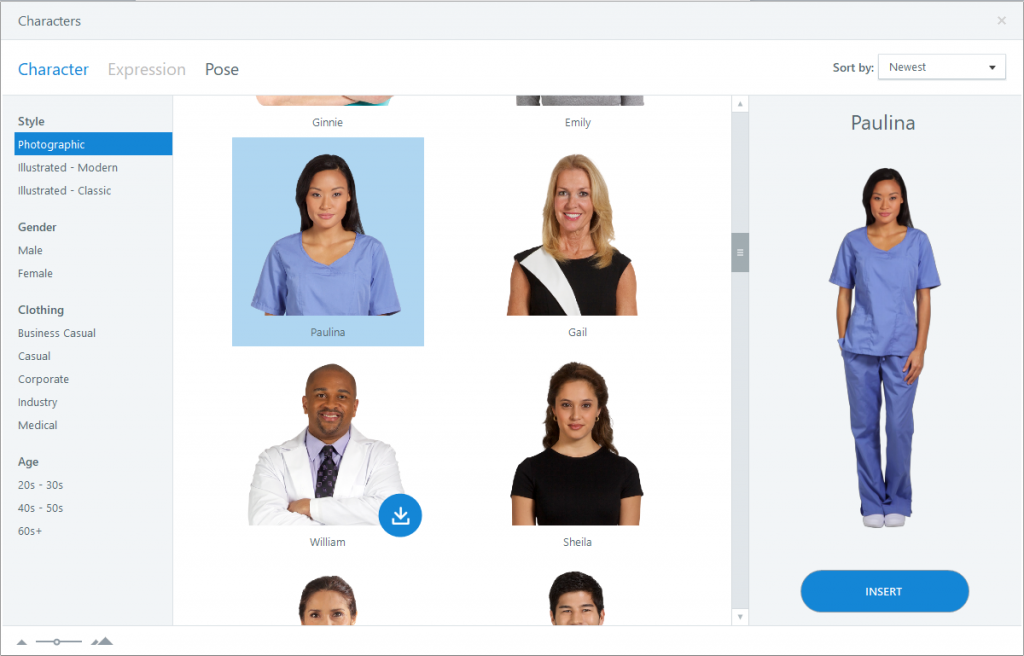
Everyone loves a good story.
Storytelling has been an integral part of human communication and knowledge transmission for thousands of years. As humans, we are inherently drawn to stories—it’s in our DNA. And we’re surrounded by them – whether in novels, social media, films, advertising, the news, or from people sharing anecdotes and jokes as a way to connect with each other.
But what about eLearning designers? Do we need to be good at telling stories? Some people would say – ‘no, we are creating courses not stories’. While that’s true, there are many things eLearning designers can learn from the art of storytelling. By incorporating storytelling into eLearning learning, we can unlock a new level of engagement and effectiveness.
Storytelling is defined as “The telling of a happening or connected series of happenings, whether true or fictitious; account; narration.” (Denning, 2005)
In this blog, we look at the elements of a good story and how we can apply them to eLearning design.
Good stories are cohesive and well-structured
There are general conventions in the way stories are structured – the opening should hook the reader, the middle develops the story, and the end may reach some form of resolution.
An eLearning course also needs to be cohesive and well-structured. When planning a course, ask yourself:
- What elements will hold the course together?
- How will I grab the learner’s attention in the first few screens?
- What is the most logical way to sequence the course content?
Certainly, visual design is important to create a cohesive look and feel. But what about the course structure? Is the content jumping from topic to topic with no common thread? Is there a story that you could use to hold the topics together?
For example, if you are designing a course on coaching and mentoring, you could introduce two characters at the start – Jan, the mentor, and Sara the mentee. The characters can introduce each new topic and talk about their experience of the mentoring process – how they met, how they planned their first meeting, how they set goals, and so on.
Some authoring apps make it easy, for example, Articulate Storyline encourages eLearning designers to think in terms of telling a story. It features Story view where the designer sees an aerial view of the course (the story), including scenes (the chapters) and slides (the pages). This helps to understand how the course is going to fit together. Screens and scenes can be easily rearranged. Story view encourages creativity because there are so many different ways that you can structure the course.
Good stories are memorable
Usually, it is the characters or people in a story that we remember the most. You can certainly design an eLearning course without people in it, but it might not be as engaging.
Once again Articulate Storyline provides characters that you can insert quickly and easily. While you won’t have the time to fully develop well-rounded and complex characters, they are still an important part of the eLearning experience as the learner can relate and connect to them.
If you take a look at the Articulate 360 content library, you’ll see the characters come in a range of poses and expressions so you can use the same character throughout the course.

For example, if you are designing a course for the health sector, you can insert images of a nurse or doctor in different poses throughout the course. Give the characters a name and put them in different work situations that the learners are likely to face. Talk to the Subject Matter Expert to ensure the situations are more realistic.
Good stories are often about overcoming problems
As inherently social beings, our natural inclination is to connect with others. This innate need for connection is why scenarios are so effective in eLearning courses. Picture a workplace scenario: it sets the stage by presenting a challenge or dilemma the character grapples with, inviting the learner to step into their shoes and ask, “What would you do?” This engaging approach empowers learners to think critically and independently. After all, the most compelling stories are those that revolve around overcoming challenges and hurdles.
For example, imagine you are creating a course about equal employment opportunities. Your central character could face a struggle, such as discrimination on the basis of disability. Introduce the character to learners and return to them throughout the course. Describe their experience at job interviews. Ask the learners questions about how others have communicated and interacted with your character. And if you like, make it a happy ending where they finally land their dream job. The learners are likely to remember the character and their story.
Final word
While hugely beneficial, storytelling is not going to be appropriate for all eLearning courses. Its suitability may vary depending on several factors. Firstly, the topic and purpose of the course play a pivotal role; highly technical or compliance-driven content might require a more straightforward, information-centric approach. Secondly, the characteristics of the learners, such as their familiarity with the subject matter, their preferences, and learning styles. Additionally, the available resources, time constraints, and the overall course design should be considered. Lastly, the desired learning outcomes and the level of interactivity needed should guide your choice to incorporate storytelling or opt for alternative instructional methods.
Let’s finish with two quotes about the power of stories:
“Over the years I have become convinced that we learn best – and change – from hearing stories that strike a chord within us.” John Kotter, Harvard Business School Professor
“Stories are how we think. They are how we make meaning of life. Call them schemas, scripts, cognitive maps, mental models, metaphors, or narratives. Stories are how we explain how things work, how we make decisions, how we justify our decisions, how we persuade others, how we understand our place in the world, create our identities, and define and teach social values.” Dr Pamela Rutledge
If you are interested in learning more about writing brilliant stories using Articulate Storyline, visit our Certified Articulate training webpage.
